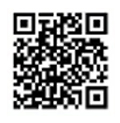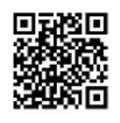目的探讨综合预防干预对HIV单阳家庭的HIV传播及对HIV/AIDS患者血常规、CD4细胞的影响。方法选择2015年9~12月在广西南宁市第四人民医院门诊就诊的HIV/AIDS患者及其HIV阴性配偶(即HIV单阳家庭)205对作为研究对象,采取抗病毒治疗等综合干预措施进行干预。通过定期检测阴性配偶HIV抗体、检测阳性患者CD4细胞以及外周血细胞,评估干预效果。结果对205对HIV单阳家庭采取综合干预措施干预后随访24个月,全部家庭中的阴性配偶均没有出现HIV抗体阳转。HIV单阳家庭阳性患者在不同时间的WBC计数比较差异有统计学意义(P<0.05),并随着干预时间增加WBC计数呈升高趋势;患者在不同时间的CD4细胞计数比较差异有统计学意义(P<0.05),随着干预时间增加CD4细胞计数呈升高趋势;患者在不同时间的TLC计数、PLT计数、RBC(男)计数、RBC(女)计数、HGB(男)、HGB(女)比较,差异均无统计学意义(P>0.05)。HIV单阳家庭阳性患者的CD4细胞计数与WBC计数、TLC计数在各时间点均存在相关性(P<0.05);其CD4细胞计数与PLT计数在干预12个月时存在弱相关性(P<0.05);其CD4细胞计数与HGB在干预前存在弱相关(P<0.05);其CD4细胞计数与RBC计数在各时间点均无相关性(P>0.05)。结论采用抗病毒治疗等综合措施对HIV单阳家庭夫妻进行预防干预,可有效控制HIV在配偶间的传播,提高HIV/AIDS患者的WBC计数、CD4细胞计数水平。
当前位置:首页 / 综合干预对HIV单阳家庭HIV传播及对阳性患者血常规和CD4细胞的影响▲
论著
|
更新时间:2019-07-10
|
综合干预对HIV单阳家庭HIV传播及对阳性患者血常规和CD4细胞的影响▲
Effect of comprehensive intervention on HIV transmission between HIV single-positive families and on blood routine and CD4 cells in positive patients
内科 201914卷03期 页码:257-259+313
作者机构:广西艾滋病治疗中心&南宁市第四人民医院,南宁市530023
基金信息:▲基金项目:国家十二五重大科技专项项目(2012ZX10004910);广西科学研究与技术开发计划项目(桂科攻1598012-36);南宁市科学研究与技术开发计划项目(20153120)
- 中文简介
- 英文简介
- 参考文献
ObjectiveTo explore the effect of comprehensive preventive intervention on HIV transmission between HIV single-positive families and on blood routine and CD4 cells in HIV/AIDS patients. MethodsA total of 205 pairs of HIV/AIDS patients and their HIV-negative spouses (i.e., HIV single-positive families) were selected from the outpatients of our hospital from September to December 2015. They were treated with comprehensive interventions including antiviral therapy. Intervention effects were assessed by routine testing of negative partner HIV antibodies, of positive patients CD4 cells and their peripheral blood cells. ResultsAfter comprehensive interventions, 205 pairs of HIV single-positive families were followed up for 24 months, no HIV antibody positive conversion was observed in all negative spouses in the families. There were statistically significant differences in WBC count in HIV single-positive family patients at different times (P<0.05), and the WBC count increased with the raise of intervention time. There were statistically significant differences in CD4 cell count on patients at different times (P<0.05) , and the CD4 cell count increased with the raise of intervention time. There were no statistically significant differences in TLC count, PLT count, RBC (male) count, RBC (female) count, HGB (male), and HGB (female) at different times (P>0.05). There were correlations between CD4 cell count, WBC count and TLC count at each time point in HIV single-positive family patients (P<0.05). There were weak correlations between CD4 cell count and PLT count at 12 months after intervention (P<0.05) , and between CD4 cell count and HGB before intervention (P<0.05). There was no correlation between CD4 cell count and RBC count at each time point (P>0.05). ConclusionThe use of comprehensive measures including antiviral therapy to prevent couples in HIV single-positive families can effectively control the spread of HIV among spouses and improve levels of the WBC count and CD4 cell count in HIV/AIDS patients.
-
无




 注册
注册 忘记密码
忘记密码 忘记用户名
忘记用户名 专家账号密码找回
专家账号密码找回 下载
下载 收藏
收藏
